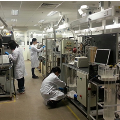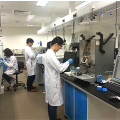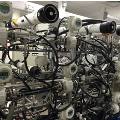MEMBRANE TECHNOLOGY
Membrane Technology (SMTC)
The domain of membrane technology (SMTC) established in January 2008 to do fundamental and applied research in membrane technology. In particular, it has a mission to be a world-class research unit in membranes for the environment, water, energy and cleaner production. This is achieved through combining multidisciplinary talents at NTU as well as working closely with government institutions, other universities and industry partners to bring the outcomes of the research activities to larger scale through collaborative projects.
From fouling in the reverse osmosis process to ultra-thin hollow fiber and seawater desalination, membrane technology has a profound impact in the circular water economy. In support of the sustainability journey towards lowered energy consumption drives us towards better membrane technology development through areas such as systems design. Our applied research in Membrane technology is on its mission to be world-class cleaner environment, water, energy and production, combined with multidisciplinary talents at NTU, government institutions, other universities and industry partners through collaborative projects.
Areas of research
SMTC research into membrane technologies targets solutions for water, environment, energy and cleaner production:

Novel membranes
- FO/PRO
- Low pressure NF
- Membrane distillation
- Biomimetic

Enhanced module & system design
- Multi-stage approach
- 3D printed spacer & module

Fouling controls and sensors
- Preventing membrane damage
- Optimizing performance

Novel Membrane Bioreactors (MBRs)
- AnMBR
- Extractive MBR
- Fluidized bed MBR
Facilities
SMTC has a dedicated laboratory of 1000 m2, equipped with state-of-the-art research facilities and supported by advanced analytical instruments to enable high quality membrane research, including: field emission scanning electron microscopy (FESEM), atomic force microscopy (AFM), fourier transform infrared (FTIR) microscopy, suface potential analyzer, porometer, liquid chromatography-organic cabron detector (LC-OCD), electrical impedance spectroscopy (EIS), ultrasonic time-domain reflectometry (UTDR), optical coherence tomography (OCT), etc.

.png?sfvrsn=172f56da_0)
.png?sfvrsn=2ef30069_0)
.png?sfvrsn=bdd5a5a_0)






